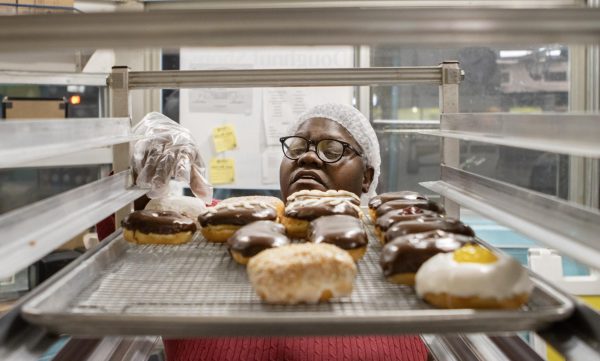Price can’t be placed on life
No need existed for the loss of life that occurred Saturday, not because of a the failed tile being blamed for the accident, but because the souls aboard Columbia did not need to be in space.
The United States and Israel lost the lives of seven brave men and women when the space ship Columbia disintegrated 39 miles above the earth’s surface.
What was the purpose of this mission? The crew was conducting some 80 scientific experiments, some of which only had the purpose of bettering conditions on future space missions.
It was the first purely scientific mission in three years. Every other mission in the previous three years involved bringing construction materials to the international space station.
However, the most important experiment observed the affects of dust storms over the Mediterranean sea and Africa to better understand the effect of dust storms on global warming. All the crew did for this experiment was take pictures from space. Doesn’t NASA have satellites capable of doing the same thing?
A cornucopia of good things can be done with the money NASA spends on sending a space shuttle into space. With the nation submerged in debt, the United States doesn’t need to be shooting billions (not millions) of dollars into the dark, never ending reaches of outer space.
The money used to send the space shuttle into space could be used for improving schools, social security, healthcare or other social problems the United States faces. Instead, the money is burned up in the few minutes it takes for the space shuttle to break the earth’s gravitational force.
But a price can’t be placed on human life. A human life is not worth an experiment or a few photographs of dust clouds.
However, the seven members of the Columbia died while living their life long dream. They knew the risks involved with space travel. They knew all the statistics, like the thousands of moving parts on the space shuttle, the hundreds of devices that could fail and the small margin of error on takeoff and re-entry.
Jerry Lingenger, a retired astronaut, said, “What binds you together is the shared danger, the shared risk that you’re all taking together.”
What happened to Columbia was not a disaster; it was the laws of probability in action. The crew did not care about the numbers; they wanted to go into space.
What about the risk innocent victims faced? Falling debris didn’t kill anyone Saturday, but what if it did?
No one on the ground volunteered to have smoldering space shuttle debris land on their property.
But according to a poll in USA Today, 82 percent of people polled said the United States should continue a manned space shuttle program. Of those 82 percent, I wonder how many people knew, or cared, Columbia was in space before the news of its demise was announced early Saturday morning.
But what is the point to continued space exploration?
NASA is nothing more than a decaying remnant of the Cold War. It was created with the purpose of exploring space and thrived on immense amounts of funding from a government wanting to prove its worth with displays of technological superiority over the Soviet Union.
The feuding and persistent push to beat the Russians created hasty work resulting in tragic mistakes and costly blunders, like the Hubble Telescope, giving the American space program several black eyes.
In the end, the program’s biggest contributions to society were products like Tang and velcro.










































